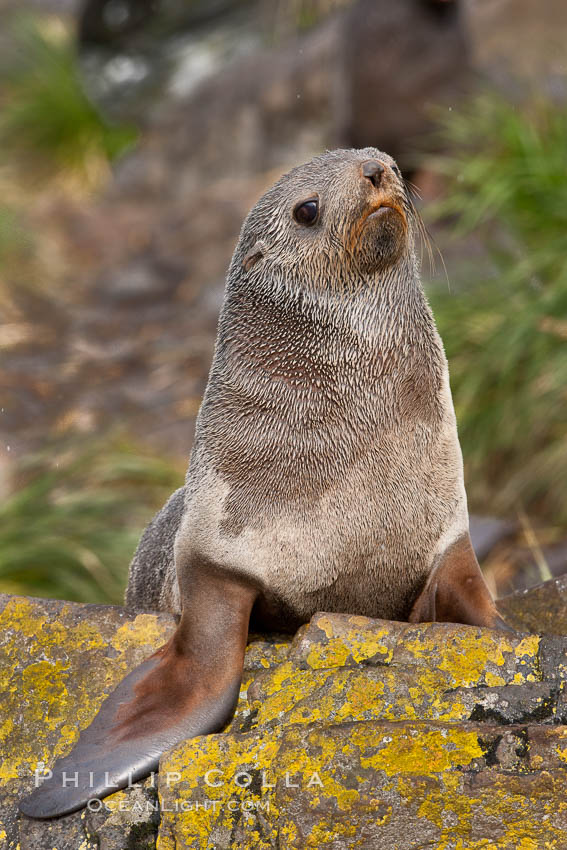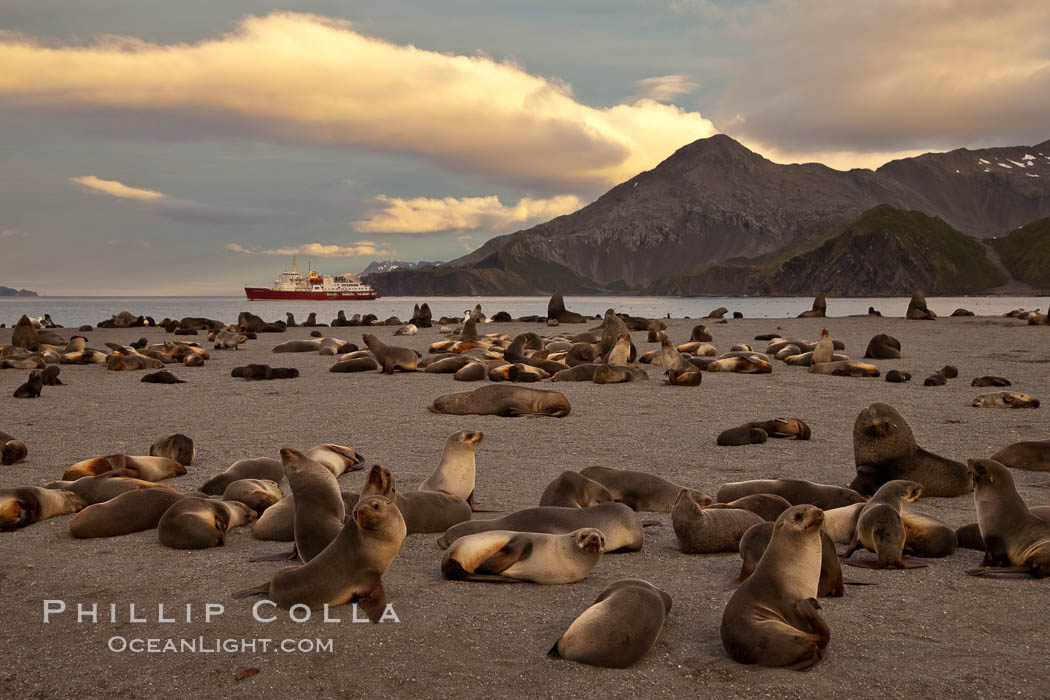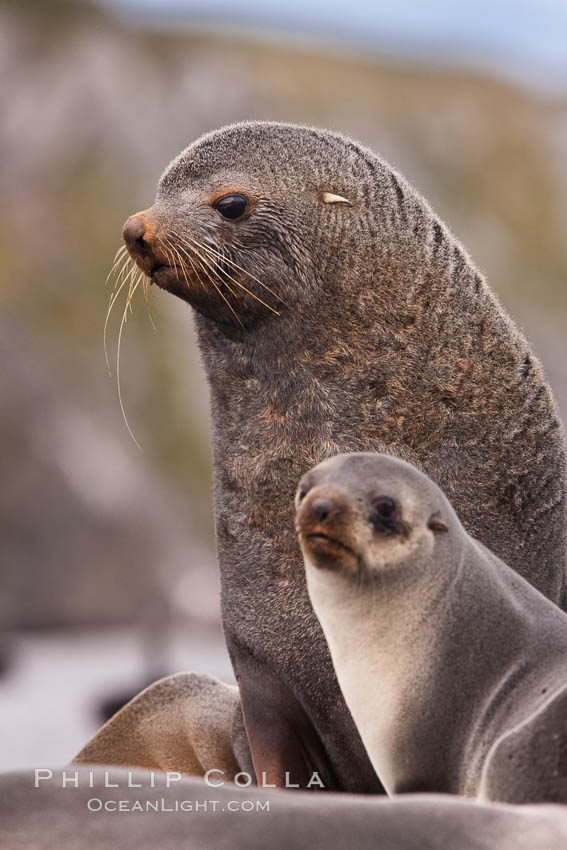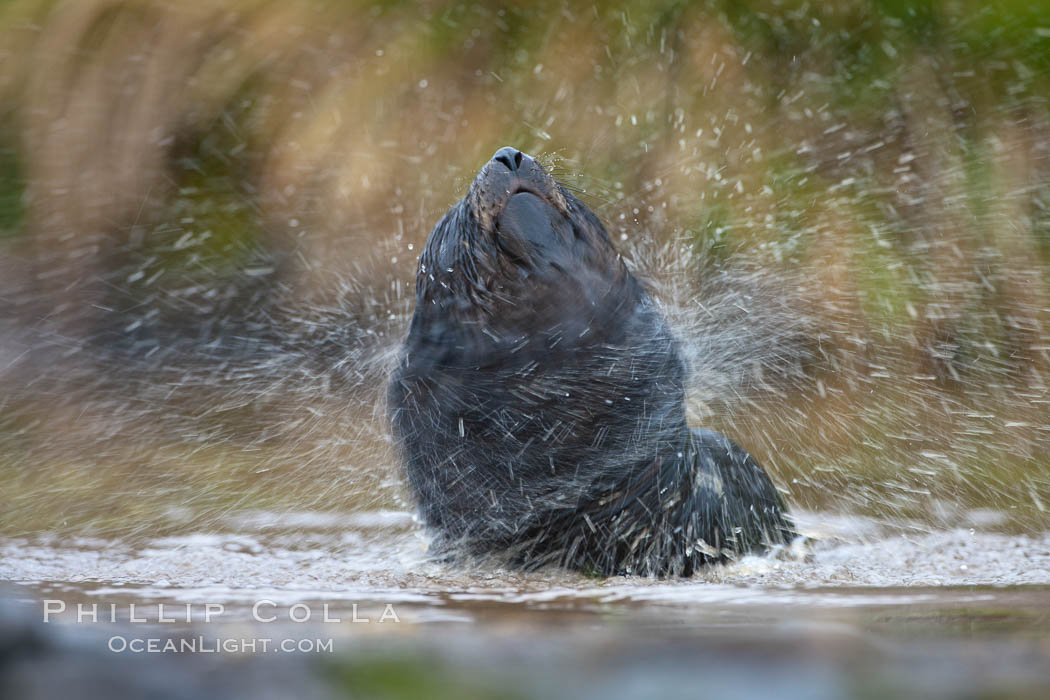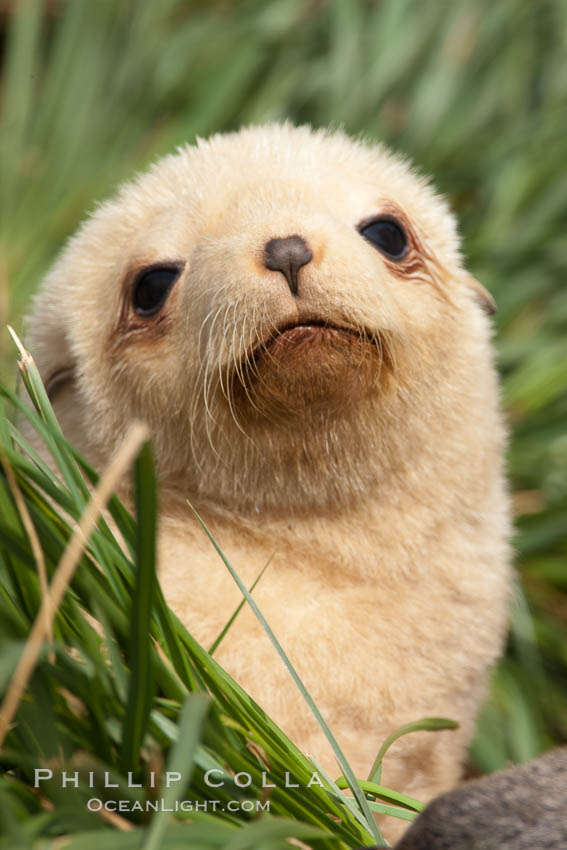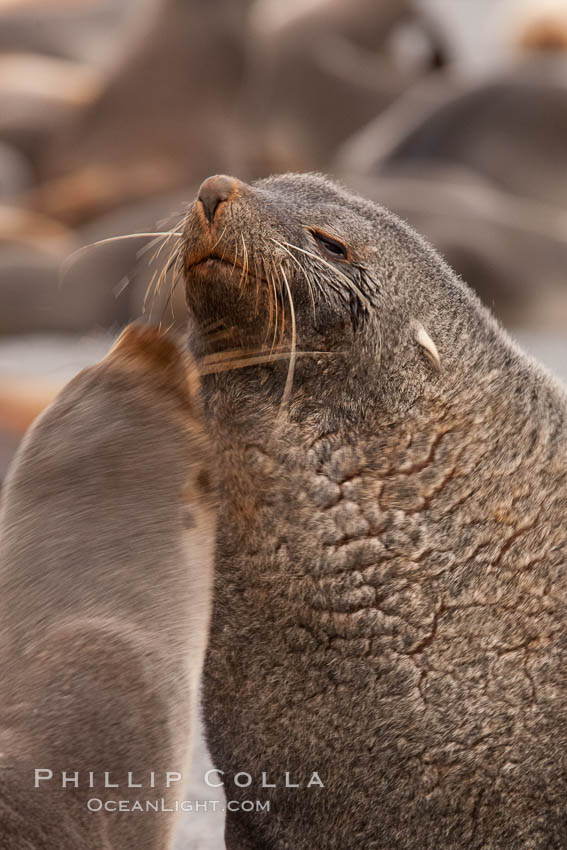Antarctic Fur Seal Photos, Arctocephalus gazella
I love photographing fur seals. (I love diving among them even more, but that is not always possible.) Fur seals are one of the “eared seals”, similar to the gregarious sea lions familiar to my friends on the West Coast. In my opinion, however, fur seals are more elegant and appealing in their behavior and appearance than sea lions. On my trip to South Georgia Island last year, I was looking forward to seeing Antarctic Fur Seals (Arctocephalus gazella). We saw plenty of them. Our timing (early January) coincided with the peak of their presence on the island and with their mating and courtship behavior. At this time, the fur seals are gathered ashore in huge numbers on beaches and rocky shorelines. At some of the landings we considered, the beaches were so crowded with fur seals we could not safely go ashore. During the breeding season, the fur seals’ hormones are raging, which causes adult male fur seals to become quite territorial. The bulls (males) have assembled small harems of females, attempting to mate with each one. The bull fur seals guard access to their females closely, defending the harem against interlopers. For many weeks the bulls remain ashore, guarding their harem, without going to sea for forage for food. They lose weight, and they are often seriously injured in bite-laden conflicts with other males. The fur seal bulls are easily agitated and will take a run at, and even try to nip, a passing human, so it was important for us to keep our eyes on the fur seals and make sure we did not encroach on their space. Even those unfortunate males who were too small or too old to win or maintain a harem were testy, probably as a result of their elevated hormones coupled with no way for them to release that pent up procreative energy. Making my way along a large sand beach near fur seals on the beach was not difficult, but there were times when I was walking through waist-high tussock grass that I would encounter a fur seal unexpectedly. That was exciting. I love these animals.
Antarctic fur seal.
Image ID: 24392
Species: Antarctic Fur Seal, Arctocephalus gazella
Location: Hercules Bay, South Georgia Island
Antarctic fur seal colony, on a sand beach alongside Right Whale Bay, with the mountains of South Georgia Island in the background, sunset.
Image ID: 24315
Species: Antarctic Fur Seal, Arctocephalus gazella
Location: Right Whale Bay, South Georgia Island
Antarctic fur seals, adult male bull and female, illustrating extreme sexual dimorphism common among pinnipeds (seals, sea lions and fur seals).
Image ID: 24324
Species: Antarctic Fur Seal, Arctocephalus gazella
Location: Right Whale Bay, South Georgia Island
An antarctic fur seal pup plays in the water.
Image ID: 24605
Species: Antarctic Fur Seal, Arctocephalus gazella
Location: Fortuna Bay, South Georgia Island
Leucistic juvenile antarctic fur seal, young pup, juvenile, blond. A leucistic animal is one that has pigmentation levels far below normal and is thus much more lightly colored.
Image ID: 24617
Species: Antarctic Fur Seal, Arctocephalus gazella
Location: Fortuna Bay, South Georgia Island
Antarctic fur seal, adult male bull (right) and female (left) confirm their identities via scent.
Image ID: 24325
Species: Antarctic Fur Seal, Arctocephalus gazella
Location: Right Whale Bay, South Georgia Island
The Antarctic fur seal (Arctocephalus gazella) is found only in Antarctic waters, with 95% of the world population breeding at South Georgia Island. Male Antarctic fur seals are considerably larger than females, growing to 2m (6.5′) in length and weighing up to 450 lbs. Probably due to the stresses they encounter during the breeding season, males live only about 15 years while females live up to 25 years. Antarctic fur seals breed polygynously, meaning that a single bull (large adult male) mates with up to 20 females in a season. The female groups are often referred to as harems, which the bull guards in a aggressively territorial manner. Breeding territories are established on beaches in October and November. Females give birth to their single pups in November and December. Shortly after (7 to 10 days) they give birth, the females will mate and then sustain a gestation that is about a year long. The pups are weaned after about four months. During the six to eight weeks that they are establishing and maintaining their breeding territories, bull Antarctic fur seals fast and lose up to 3.5 lbs each day. Once the breeding season has ended, the fur seals will leave to spend much of the year at sea, foraging for food. Krill is the most common food source for Antarctic fur seals. Krill stocks around South Georgia Island vary from year to year. Below average amounts of krill stresses the Antarctic fur seal population, which can lead to high mortality, especially among juveniles and pups.
